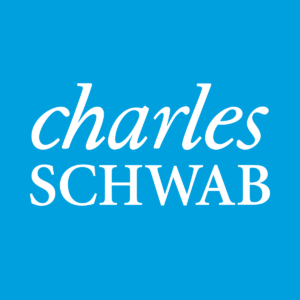
Written by: Grier Rubeling, Owner/Operator, Advisor Transition Services
This article is a follow up and revamped version of the original, “Raymond James vs Charles Schwab: An RIA Model Comparison”, published in 2021.
RIA Custodian Comparison:
Raymond James vs Schwab vs Fidelity vs Pershing
When starting an RIA, or researching RIAs to plug into, choosing the right custodian can be a crucial decision, impacting everything from client experience to a team’s operational efficiency. Each firm offers unique advantages – like technology and platform integration, service and pricing structures, and transition and back-office support. Some of the major players include Raymond James, Schwab, Fidelity, and Pershing. In this article, we’ll break down the pros and cons of those four institutions to help RIAs make a more informed choice based on their firm’s specific needs and priorities.
Being that I’m a transition consultant to advisors, my experience working with these custodians is limited to the processes, procedures, and technology involved in those initial onboarding stages. However, my experience consulting RIAs in the M&A space has provided me with additional context and insight into the products and services offered outside of the transition timeframe.
Disclaimer – my opinions are my own. They’re based on real-world experience and advisor feedback. I am not employed by any of the firms or compensated for any of my written content about them. I have no special insight into their internal processes beyond what I’ve personally witnessed or been invited to experience.
In the original article I wrote, I compared Raymond James to Charles Schwab, because those were the two firms I had the most transition experience with, and they seemed to be the ones advisors were approaching me and asking questions about. Since then, our firm has assisted with more Fidelity and Pershing transitions, and both Raymond James and Schwab have made changes to their processes. Thus, this updated article.

Of the custodians that work with RIAs, Raymond James is probably the one that most closely resembles a wirehouse offering, albeit without some captive constraints. Because they support advisors in all channels, RJA (W2), RJFS (1099), ICD (Contractor), and RCS (RIA), they have robust systems in place that serve all channels. Their technology, procedures, and advisor support are relatively consistent, regardless of the channel.
Benefits
- Less Culture Shock: For breakaway advisors leaving the comfort of the wirehouse space for the first time, a partnership with RJ can offer a lot of the internal support that advisors are accustomed to. RJ is a broker-dealer, so they understand the mindset of the advisor “raised in captivity”. The technology and support they provide to advisors on the independent side mimics what they provide to the other channels, so a transition can feel more seamless.
- Proprietary Technology: RJ invests incredible amounts of money into their platform, creating an ecosystem that’s designed to “talk to itself”. In 2024, they invested nearly $1B in their technology. They’re constantly making improvements and asking for feedback. And the independent channel benefits from access to features built out for the BD channel, like an in-house CRM.
- High-Touch Support: The support RJ provides is robust. Each of the individual departments (New Accounts, Transfers, Trading, etc) can be reached directly by phone and email, and the RCS department has a team that provides another layer of support on top of that. RJ employees can be searched for and contacted directly, including those processing specific requests. Most transitions also qualify for on-site support from a consultant.
Limitations
- DocuSign Restrictions: DocuSign is integrated into the RJ system and has some significant limitations. Many of the customizable features the platform offers are not an option at RJ, and document editing inside the software is unavailable. Clients cannot be prompted to fill in missing info, so only completed documents can be sent. There is also currently no way to send firm RIA documents through the RJ DocuSign, so a separate e-signature platform is required for those.
- Higher Fees: RJ custodial fees often run higher than Schwab or Fidelity to cover the cost of the additional in-house resources offered. If you’re not taking advantage of those resources, you could essentially be paying for features you don’t need.
- Tightly Controlled API: Because RJ is a broker-dealer first, and puts a focus on security and compliance, its proprietary systems limit the “plug-and-play” options that many RIAs seek. Integration opportunities are available but are much more restrictive than the other firms.
Additional Feedback
With a focus on (and the most profitability in) other channels, RJ has the most “wirehouse flavor,” and you’ll likely notice some FINRA-type compliance standards, particularly around suspicious activity monitoring and money movements. While their proprietary onboarding system (COB) is intuitive and easy to use, it can catch some advisors by surprise when it comes to some of the additional client information being required. If you’re coming from a wirehouse environment, prefer the added security and oversight, and like the idea of having everything you need in one place, RJ could be for you. If you’re wanting to add RJ as an additional custodian to your business, or you’re looking to build the ultimate tech stack, RJ may give you some pause.
My Opinion
As a third-party transition consultant, who has been doing RJ transitions for 12+ years, I have a major soft spot for this custodian. I will also point out that I worked for an RIA prior to starting my own firm, and we utilized RJ as our main custody platform. I’ve developed relationships with their employees. I know the systems extremely well, and my feedback is always encouraged. I’ve beta tested new feature rollouts and been invited to exclusive events for prospective advisors. Greg Bruce, the President of their RIA & Custody Services Division (RCS), is passionate, intelligent, and worked for Schwab for 21 years before joining RJ. Their business development team is honest and helpful and always directly reaching out to me if they think a situation could use more manpower. And I promise I haven’t been compensated for anything I just wrote.

Schwab is, by far, the largest RIA custodian in the game, which has its benefits and drawbacks. They’re a household name, typically with no initial AUM minimums, making them a go-to choice for many fledgling RIAs or breakaway advisors.
Benefits
- Brand Recognition: One of the hardest parts of starting an RIA (or joining one) is explaining the relationship of all the firms to your clients. If you’re coming from a BD, “custody” may not have been a concept you needed to address. Now that you may, you can almost guarantee your clients will recognize the Schwab name.
- Open Integrations: Schwab’s platform is open architecture and the easiest firm to integrate third-party technologies with, allowing RIAs to customize how they pull data and mix and match their tech.
- No AUM Minimum: Of the 4 major firms listed in this article, Schwab is the only one without an initial minimum AUM. If you’re not managing $100 million (or more), Schwab might be your best bet for the time being.
Limitations
- Scattered Technology: Because of Schwab’s open architecture and ability to integrate, internal technology improvements do not seem to be a major focus. Even after the acquisition of TD Ameritrade, there seems to still be 4 different ways to accomplish any task, making processes confusing and training inconsistent. Upgrades happen slowly and often seem disjointed.
- Tiered Support: Support is divided into regional generalists, which makes finding subject matter experts nearly impossible. Support is also tiered by AUM size. Higher AUM = Better Support. And the employee turnover at those lower levels is significant. One of the most common phrases I hear from RIA support staff is “If you don’t like the answer you get, just hang up and call back, because you’ll probably get a different one.”
- Minimal Onsite Support: When it comes to transitions, Schwab very rarely offers onsite support anymore, and the remote support is tiered based on current AUM. Advisors joining existing RIAs often get higher levels of support than those starting RIAs. Even when support is provided, transition consultants do not perform administrative tasks (account opening, document filling, etc). They truly act as consultants, making the need for external transition support crucial in some cases.
Additional Feedback
Schwab positions themselves as the leading provider with the best of class features, and in some cases that’s true. They’re the biggest, the oldest, and the most established. However, their elitist tendencies favor those in elitist categories, leaving others to fend for themselves. They tend to take a lackadaisical approach to service requests. If items are missing from a form, they can often be provided and processed without client signatures. A convenience for RIA support teams, though strange from a compliance standpoint. Operational staff often complain that things are too siloed – with a focus on account-level, instead of household-level, requests. The general consensus overall seems to be one of resigned acceptance.
My Opinion
I have a love/hate relationship with Schwab. I rarely work with the same Schwab transition consultant twice, making it difficult for me to establish rapport or receive the proper education I need to make improvements to our team’s workflows. The process can be frustrating, because there are multiple different ways to initiate the onboarding process, and Schwab doesn’t have a due diligence process to help teams determine the appropriate approach. I often walk advisors through the benefits of using digital onboarding versus the transition tool, then have to explain the nuances of Schwab DocuSign versus advisor-owned DocuSign and why the authentication methods are different. During transitions, I find myself cursing whoever determined which accounts go into which envelopes (max is 3), because they never seem to be organized by the signer. During one transition we helped with, Schwab selected the wrong method in the transition tool, and by the time it was fixed, I had already used my PDF filler to create packets myself, load them into DocuSign, and start sending them to clients with a much higher percentage of success.
Despite these experiences, I appreciate that Schwab has an open architecture and flexible processes, because I am a problem solver, and being able to accomplish things multiple ways can benefit me in my line of work. With no AUM minimums, it makes sense to have Schwab as a custodian but expect some frustrations if you’re not enterprise level.

In terms of architecture, Fidelity falls somewhere in between Raymond James and Schwab on the scale. Like RJ, Fidelity has minimum AUM requirements for advisors joining the platform. Often sited at $100M AUM, an advisor may not qualify for the Fidelity platform unless they are joining an existing RIA that is already on the platform.
Benefits
- Proprietary Open Architecture: Fidelity’s WealthScape platform has a lot of great proprietary features like account opening, trading, and reporting. They’re also open architecture in that they encourage the integration of third-party tools. Thus, advisors on the platform can benefit from both.
- Digital Focus: In recent years, Fidelity has made strives to eliminate paper from their process. They’ve improved their Digital Account Opening (DAO) system and added previously unsupported account types. DocuSign is integrated directly into DAO, eliminating the need to adjust in the platform after the fact. They’ve also approved the use of DIY DocuSign for firms wishing to use their own DS accounts.
- NIGO Resolution: Fidelity often lets you correct mistakes via service requests, email, or phone, without requiring paperwork to be completely redone. This is a significant benefit to those in transition when things are being done in bulk.
Limitations
- DocuSign Functionality: While “Digital Focus” was noted as a benefit, the technology doesn’t quite support that initiative yet. Certain documents are not eligible for DocuSign and have to be wet-signed. The DIY DocuSign is a great feature, but it requires customized setup to get it approved to use.
- No Onsite Support: In terms of a transition, Fidelity typically won’t send anyone onsite, and their consultants don’t open accounts or process administrative items. They’ll guide you with training and an “implementation consultant,” but execution is on you.
- DAO Functionality: The Digital Account Onboarding is easy to use and intuitive, but the process can only support 5 accounts in a household at a time. This creates the need for multiple packets to be signed by clients. Essentially, the tool was built to collect the information needed to complete PDF applications, rather than act as a true digital onboarding product like RJ.
Additional Feedback
With a minimum AUM requirement of $100M, Fidelity is not an option for all advisors. Many advisors provide positive feedback about the functionality of Wealthscape. In terms of support, there seemingly aren’t strong opinions on either side of the coin. With them falling in the middle ground for technology features and API allowances, they are generally second on the list behind Schwab for integration efforts. The biggest complaint I hear is that their purported “digital focus” isn’t supported by their technology features, causing some contradictions and frustrations.
My Opinion
Many of my opinions on Fidelity are related to the contradictions I often face when I’m assisting advisors in transition. As stated, Fidelity has put a recent focus on their digital process. In my opinion, they’re “talking the talk” without being able to “walk the walk”. For the account opening process, they “require” everything to be done using DocuSign. If you have clients without emails, or ones that prefer to sign paper, you must have specific prior approval from Fidelity to submit those paper applications for approval. They are slightly flexible about the DocuSign platform, allowing certain firms to adopt a DIY version. However, there are whole account types, and versions of forms, that are not DocuSign eligible. Thus, the only option provided is obtaining wet signatures on those documents. I find this to be extremely contradictory. If you’re going to require prior approval to submit certain forms with wet signatures, but require wet signatures on other forms, simply because you launched a digital initiative without the technology to support that initiative, you are creating chaos, confusion, and frustration. That gets amplified during a transition, when there is a focus on speed and efficiency.
We recently assisted with a transition, and I asked Fidelity for a form that I could include in a packet I was sending to a client who had multiple different versions of his name (generally described as a “one and the same” form). This is a form RJ and Schwab have in their forms library (DS eligible). I was told that Fidelity IWS did not have a form like that, but that I could use the retail version, which I could “Google”. They forwarded it to me in an email and told me I would have to obtain a wet signature and submit it with a service request and just hope the processors would see it when opening the accounts using the paperwork signed via DocuSign. Umm… what??? And don’t get me started on the conflict of interest that the retail side of Fidelity presents to advisors utilizing Fidelity as their RIA custodian.
All this to say that Fidelity’s system is easy to use, but they’re pushing a narrative that isn’t their actual reality.

Pershing positions themselves as a leading provider to larger RIAs wanting the ability to customize the platform to their specific needs. Feedback from those using their platform is harder to find and seemingly inconsistent.
Benefits
- Institutional Focus: Pershing markets directly to larger RIAs. Because of their AUM minimums (largest of all the firms), they can focus their service efforts on high-net-worth RIAs serving high-net-worth client bases.
- Global Product Availability: They have broad access to global investment products, which provides a unique niche and a definite value-add to advisors with complex books of business.
- In-Person DocuSign: Pershing is the only firm (that I’m aware of) that allows advisors to use the In-Person Signing feature available on the DocuSign platform. The purpose of the feature is to provide a way for clients to sign documents “in-person” without having to print anything. The advisor can pull up the DocuSign on a tablet, at their office, or the client’s home, and the client can use their finger or stylus pen to physically sign their name. The document then goes directly into processing as though they signed it through the mainstream DocuSign method.
Limitations
- Onboarding Technology: Pershing’s onboarding process is outdated and prone to integration issues. It’s built to fill PDFs, but there are just too many steps that need to be followed to get those PDFs to fill properly. Oftentimes, the selections made in the onboarding process don’t translate properly to the documents, and the PDFs have to be edited further.
- Transition Support: Pershing makes a big show of providing transition support to new teams. BDOs will travel to offices and are often accompanied by other Pershing team members. However, those individuals are not generally there to help with the administrative workload. They’re mostly focused on training and issue resolution. The transition team is also tasked with being the joining team’s primary support network for several months until the transition slows.
- AUM Minimums: Pershing has the highest AUM minimum of any custodian, because their target market is HNW RIAs serving HNW clients.
Additional Feedback
As I alluded to before, the feedback I get from advisors about Pershing is inconsistent – and at opposite ends of the spectrum. It’s either really good or really bad but never very descriptive. Good feedback comes from the teams with complex needs, touting Pershing’s willingness to support parts of their business that others would or could not. I’ve also heard that their support teams are helpful and willing to work closely with the RIAs. Oddly enough, the bad feedback is just as generic – head shakes, exasperated sighs, or outright warnings, with very little context but a clear frustration. Either way, it seems Pershing has a niche, and several of their offerings position them as the best option for RIAs with specific needs.
My Opinion
Admittedly, Pershing is the custodian I have the least amount of experience with. I’ve assisted with a handful of transitions, and they were all non-protocol situations that tend to be much more reactive than proactive. Honestly, I’m not a huge fan. I find their technology to be clunky, processes to be difficult to learn, and their support to be siloed. NetX360 has a few features I really enjoyed, like integrations with popular CRMs to be able to pull client data in directly when opening accounts. The in-person DocuSign feature was clutch in those small towns, working with non-protocol advisors leaving litigious firms (you know the ones). Unfortunately, like Fidelity, the system is built to essentially be a PDF filler, but it doesn’t work as well as Fidelity’s DAO. I was constantly experiencing malfunctions that would cause data to disappear entirely or show up incorrectly on forms in DocuSign. I would then have to slowly check every single page of the packet to make sure data fed in correctly, extending my timeline significantly.
Pershing provides an internal transition team, but they require all communications to go through them for the first several months of the new working relationship. In some cases, I felt like I was playing a bad game of telephone – asking a question and having to wait for the information to pass through multiple channels before getting a response that only partially answered the original question. The transition team was often reduced to playing liaison between me and the developers, constantly reporting broken buttons and links.
To be fair, I enjoyed learning a new platform and appreciated the collaboration efforts made on behalf of the Pershing transition team. I’m hopeful that they’re continuing to make updates and that my experiences will only improve over time.
The Transition Process
In the paragraphs above, I broke down some basics about each of the custodians and their transition processes, but this article would be a book if I went into detail about each. For now, I’ll leave you with these quick additional points.
- Data Requirements: All 4 firms expect you to have complete control over your client data prior to the start of the transition (assuming you can bring data with you). No firm will accept that data until after you’ve resigned from the prior firm and registered with the new one.
- DocuSign Inclusion: All 4 firms use DocuSign as their e-signature provider and put an emphasis on its usage. Utilizing your own version of DocuSign requires approval and is not guaranteed or allowed in all cases.
- Provided Support: All 4 firms expect you and your staff members to do the heavy lifting during the transition. They’ll provide the tools and training, but you are the construction crew.
At-A-Glance Comparisons by Category
Account Opening & Householding
- Raymond James: Very household-friendly. Client Onboarding (COB) allows you to open up to 100 accounts together at a time. New Account packets are grouped by signer and only require one signature per client. However, transfer forms and ancillary documents are processed separately and require manual uploads into DocuSign. RJ also has an internal feature called SmartForms that assists with form filling and processing, which is an excellent value-add but can cause some issues with transitions. Householding accounts together for viewing purposes or mailing packets is done in its own separate system and is very intuitive and produces an excellent user experience. They also have an import template that can be used in certain cases during transitions to bulk upload client and account data into COB for faster processing.
- Schwab: Not very household-friendly. Schwab is very account-level focused. The onboarding technology is not designed to group accounts together and it shows. Accounts are often split apart in the account opening process, DocuSign signing process, and general search functionality. Transfer forms and ancillary documents can be included in those onboarding packets and are generally completed as part of the account opening process, which is super beneficial.
- Fidelity: The Digital Account Onboarding system (DAO) can handle the establishment of only 5 accounts at a time, and that translates into the DocuSign process as well. Transfer forms and ancillary documents can be included in those packets, but not all forms are DocuSign eligible. And once new accounts packets are sent to clients, the process of changing information on any documents, including a client’s email address and cell phone number, can be frustrating – often requiring packets to be pulled back, redone, and resent completely.
- Pershing: The account opening process, via NetX360, is clunky. Accounts can generally be grouped together and sent as one packet, but the path to getting that packet prepared can be frustrating.
DocuSign Process
- Raymond James: RJ has a “closed” DocuSign environment with heavy restrictions and zero customization. You can’t edit documents once they’re pushed into the DocuSign platform, and there are no options for adding non-RJ related forms, including firm documents. You will need to purchase your own version of DocuSign or other e-signature platform to send those.
- Schwab: Schwab provides a version of DocuSign that your team can use, and it is fairly open-platform and customizable, to an extent. However, there are a handful of different ways DocuSign can be used (through digital onboarding, the transition tool, or directly), which can cause confusion with teams and operational issues with the back office. They do allow the use of an external DocuSign account, but it needs to be approved and added through the proper channels.
- Fidelity: There are two DocuSign options for Fidelity – DAO or DIY. DAO integrates directly with DocuSign, thus bypassing the ability for advisors to access it at all or provide any level of customization. The direct integration speeds up the process but relies heavily on the tech to work correctly, making follow up essential. The DIY version must be approved by Fidelity and formatted correctly. This version allows for editing and customization, while putting the control back in the hands of the advisor, but follow up is just as essential to ensure the integration is working as intended.
- Pershing: The Pershing DocuSign process is fine when everything is working properly but can be infuriating when it’s not. The DocuSign gets connected to NetX360, but that connection doesn’t always work as intended. The one significant value-add they offer is the in-person signing feature.
Service & Support
- Raymond James: RJ has excellent support – both general (RCS team) and subject matter experts (direct department contacts). They provide both remote and onsite transition support, and a thorough level of compliance oversight.
- Schwab: Schwab provides generalized, tiered support by geographical region. The larger the RIA, the higher level the support. Transition support is also assigned based on AUM levels, but onsite support is not guaranteed (or frequent).
- Fidelity: Implementation specialists are assigned for transitions, but they do not offer onsite support. General support is provided by an assigned service team but is limited to only those individuals on an approved list.
- Pershing: Transition support is offered, and consultants will go onsite, but they are generally more focused on training than they are on assisting with the day-to-day operations. The team assigned to the transition is the preferred communication source for several months until the conversion is complete, and Pershing is ready to convert your team over to a new ongoing support group.
Conclusion
Comparing Raymond James to Schwab to Fidelity to Pershing is a little like comparing apples to oranges to strawberries to bananas. In other words, they’re all fruit, but each one has its own distinct flavor, texture, appearance, and features. And those are just 4 of the major firms – we didn’t even mention some of the smaller (but growing) players, like Altruist. Figuring out your preference means taking into consideration your AUM, client demographics, operational dependencies, and technological needs.
At the end of the day, you’re the only one who can decide what’s best for your business and your clients. Do your homework, understand who you’re talking to and what their end game is, and choose the one that satisfies most of your needs. They each have their own nuances and sets of limitations, and you will discover more during the transition process. Be patient and flexible, and manage the expectations of your clients, your team, and yourself properly.
Need help hashing it all out or want a second opinion? Drop me a line. I’m always happy to share war stories from the front lines of RIA transitions and help you chart the path that’s best for you and your clients.
Stay Ahead!



